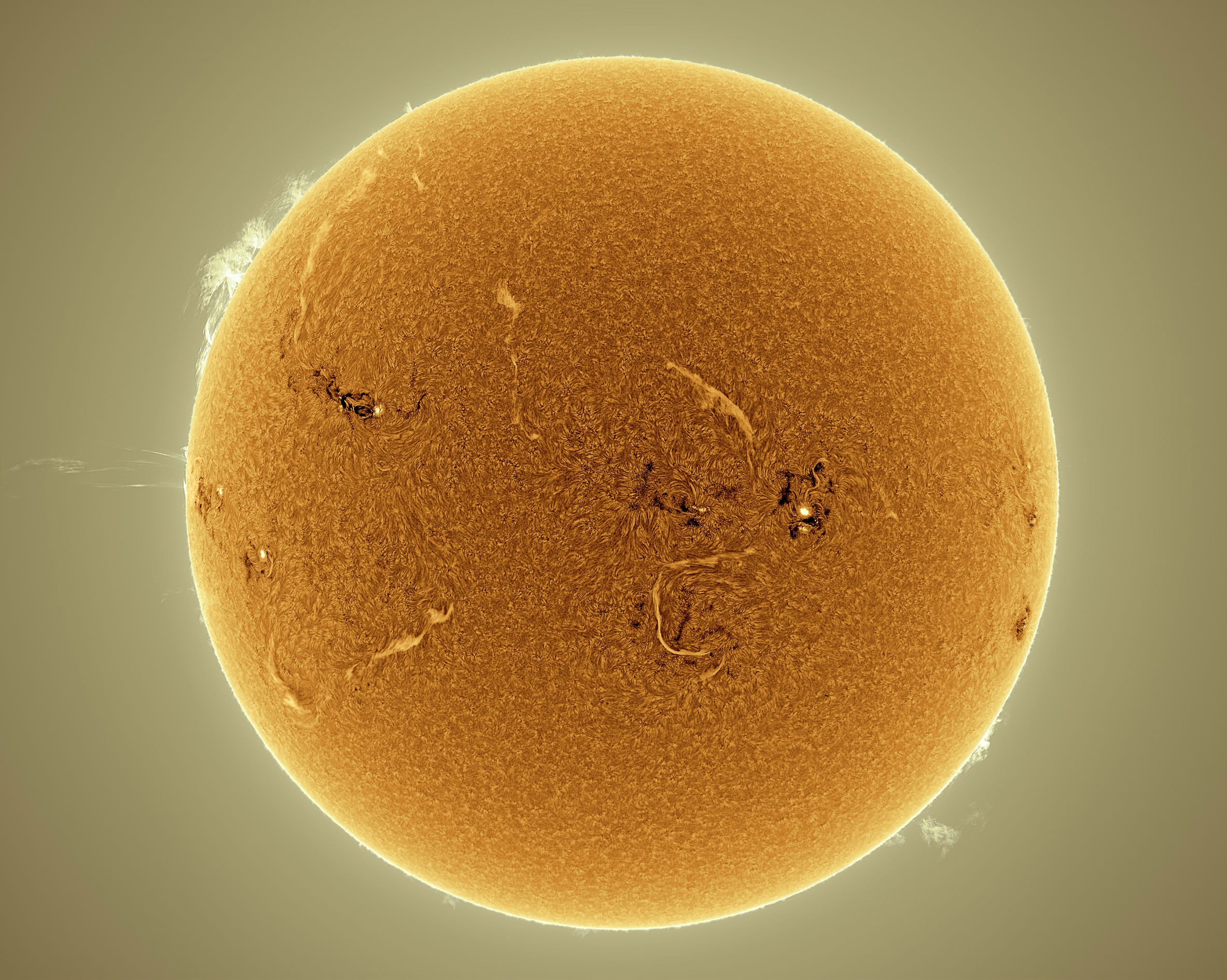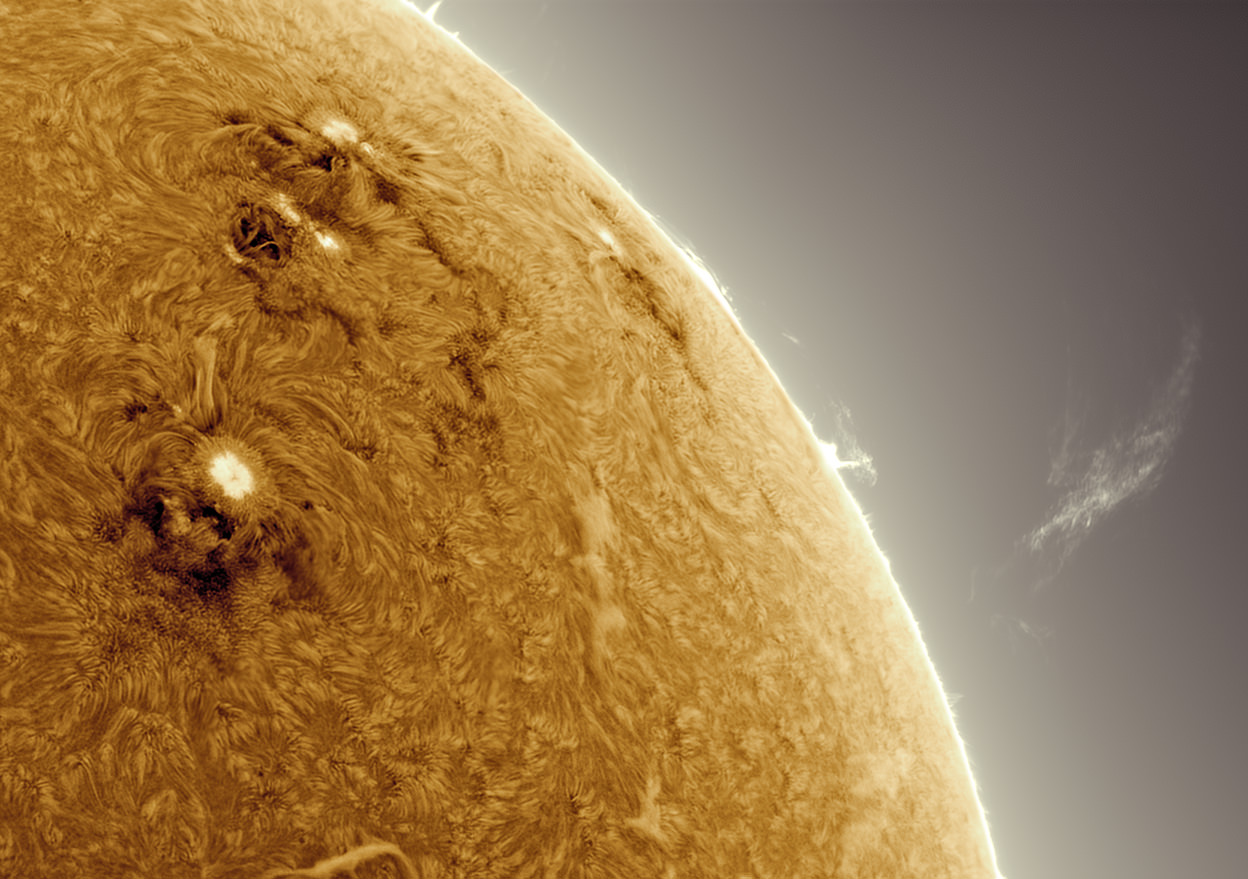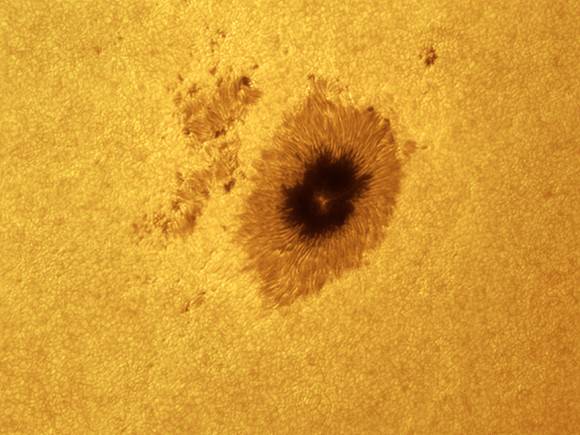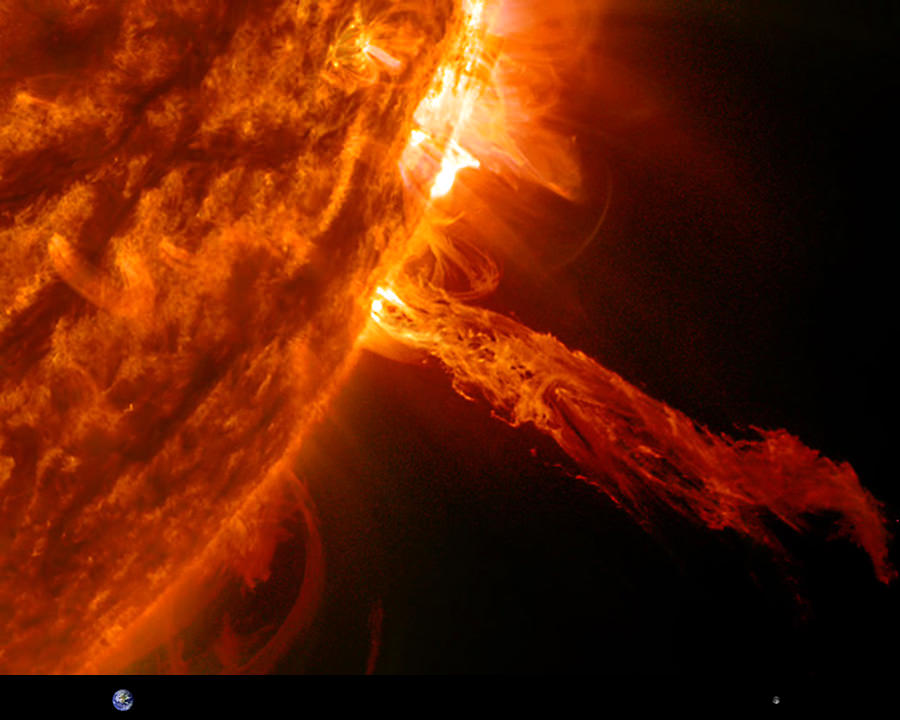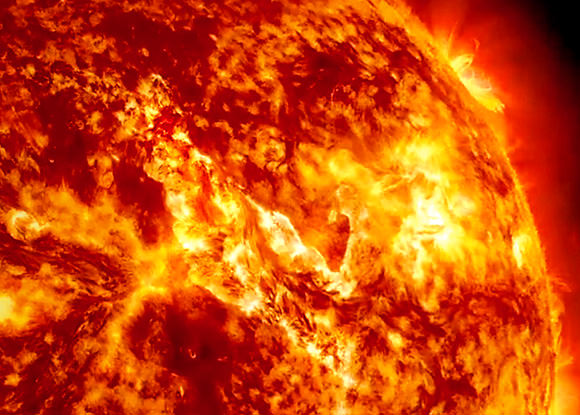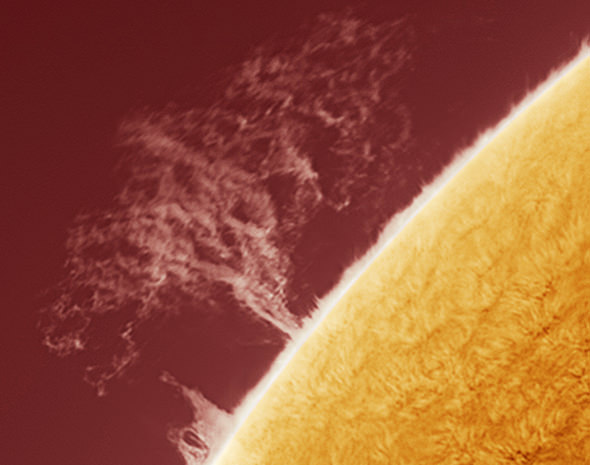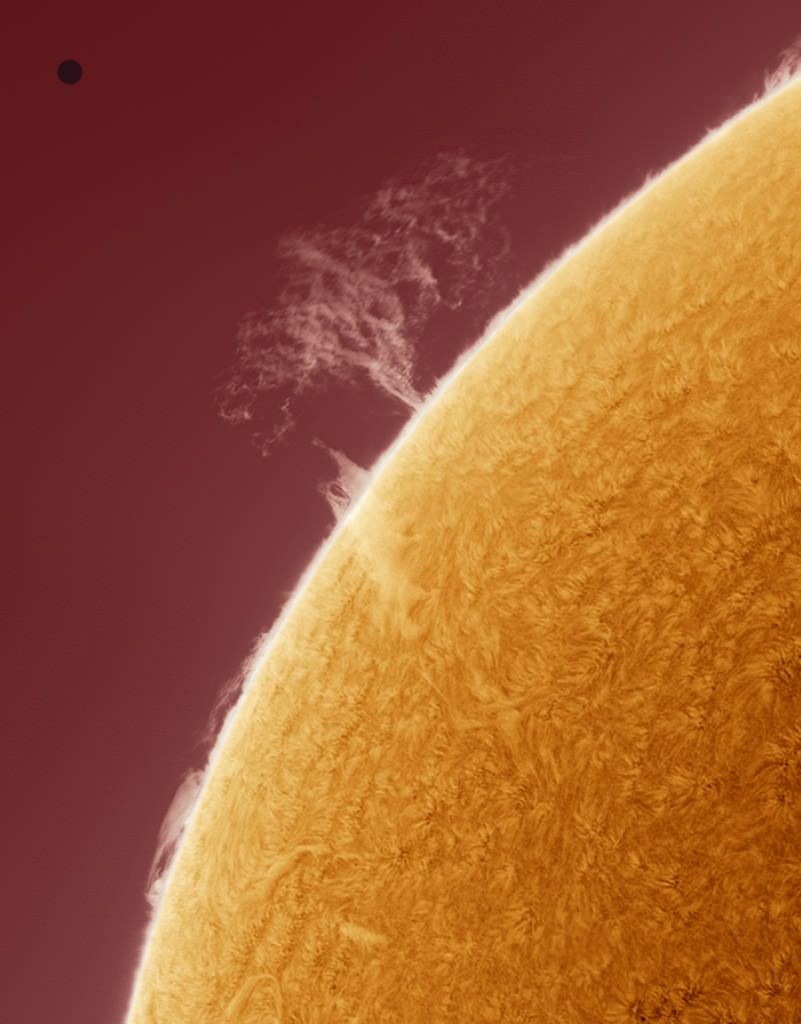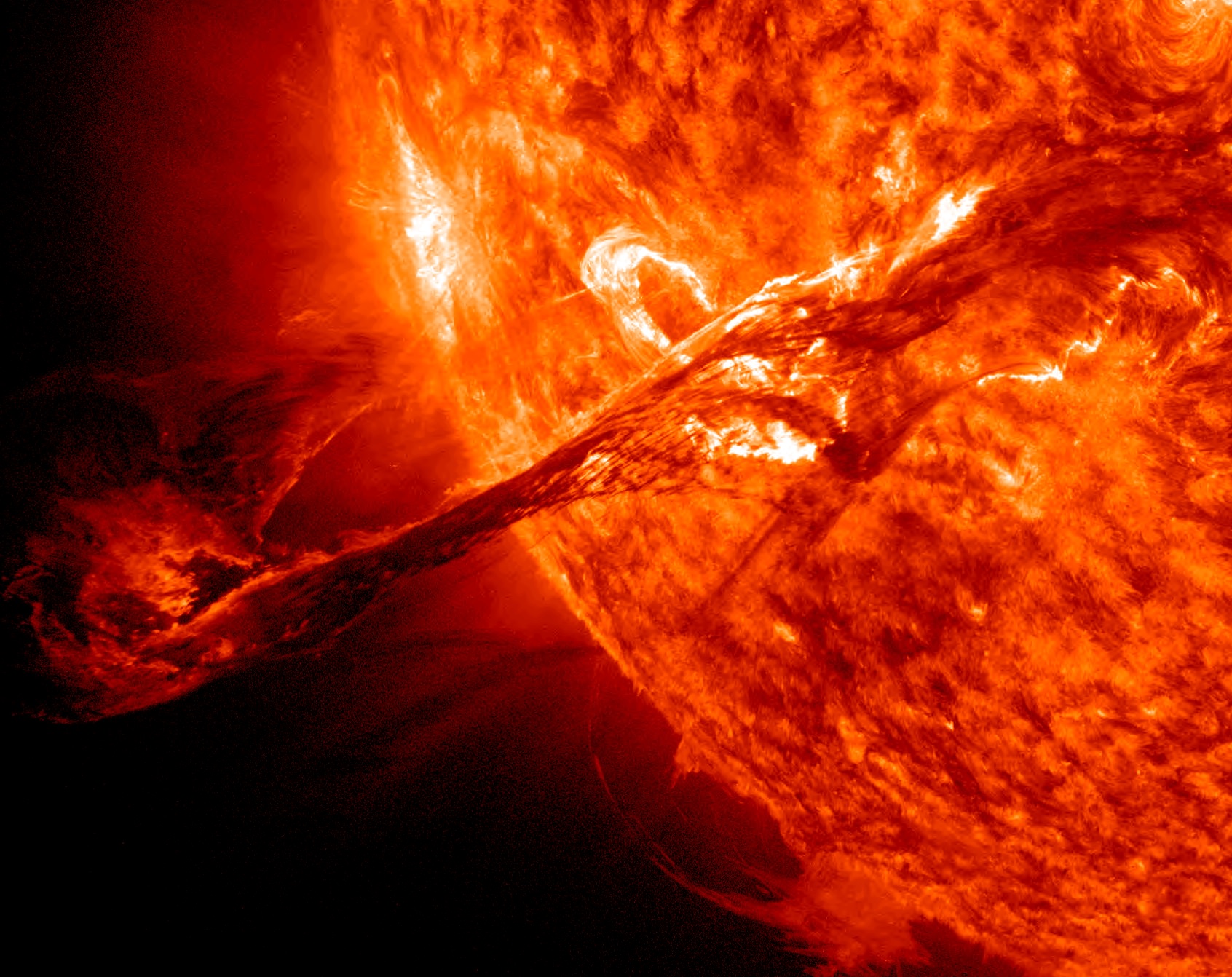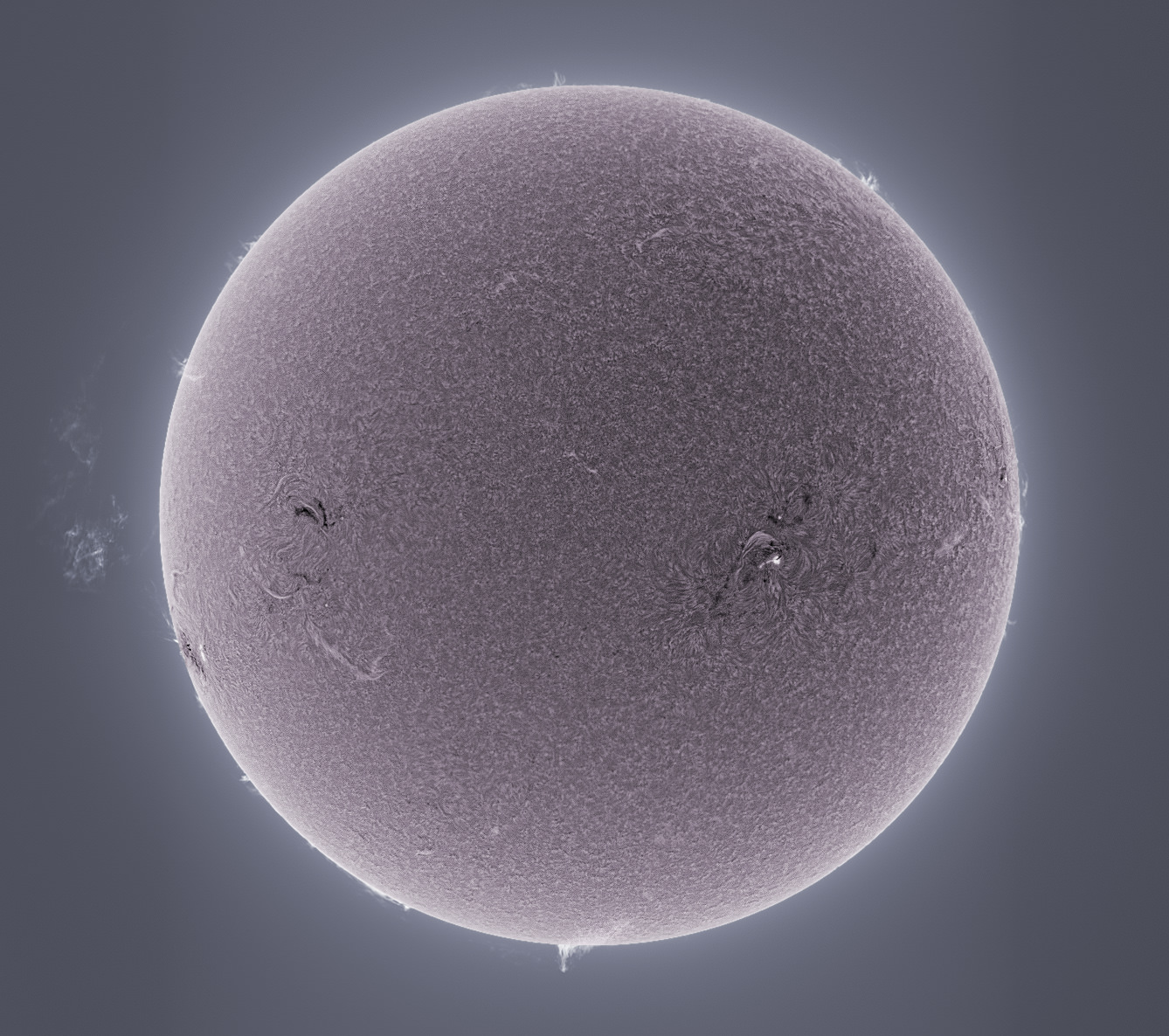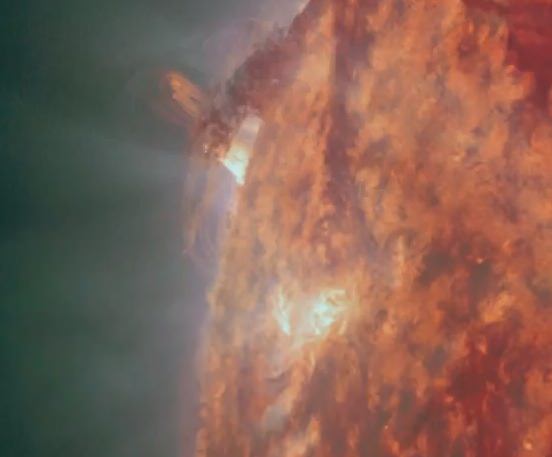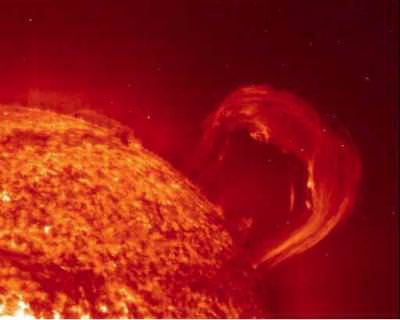[/caption]
Nowhere in the Solar System are conditions more extreme than the Sun. Every second it converts millions of tons of matter into energy to create the intense levels of heat and light we expect of our local star. Study the Sun in different wavelengths and its violent nature can really become apparent. The STEREO satellite has been studying the Sun at a wavelength of 304Å and the results support a controversial solar theory.
Coronal Mass Ejections (or CMEs) are common on the Sun and they have a very real impact to us here on Earth. The solar explosions expel trillions of trillions of tons of super hot hydrogen gas into space, sometimes in the direction of the Earth. Traveling at speeds up to 2,000 kilometers per second it takes just a day for the magnetized gas to reach us and on arrival it can induce strong electric currents in the Earth’s atmosphere leading not only to the beautiful auroral displays but also to telecommunication outages, GPS system failures and even disturbances to power grids.
Solar flares, to use their other name, were first observed back in 1859 and since then, scientists have been studying them to try to understand the mechanism that causes the eruption. It has been known for some time that the magnetically charged gas or plasma is interacting with the magnetic field of the Sun but the detail has been at best, elusive.
In 2006, the international satellite STEREO was launched with the objective of continuously monitoring and studying the CMEs as they head toward the Earth and its data has helped scientists at the Naval Research Laboratory (NRL) in Washington, D.C., start to understand the phenomenon.
Using this new data, scientists at the NRL compared the observed activity with a controversial theory that was first proposed by Dr James Chen (also from the NRL) in 1989. His theory suggested that the erupting clouds of plasma are giant ‘magnetic flux ropes’, effectively a twisted up magnetic field line shaped like a donut. The Sun being a vast sphere of gas suffers from differential rotation where the polar regions of the Sun and the equatorial regions all rotate at different speeds. As a direct result of this, the plasma ‘drags’ the magnetic field lines around and the Sun and it gets more and more twisted up . Eventually, it bursts through the surface, taking some plasma with it giving us one of the most dramatic yet potentially destructive events in the Universe.
Dr Chen and a Valbona Kunkel, a doctorate student at George Mason University, applied Dr. Chen’s model to the new data from STEREO and found that the theory agrees with the measured trajectories of the ejected material. It therefore looks like his theory, whilst controversial may have been right all along.
Its strange to think that our nearest star, the Sun, still has secrets. Yet thanks to the work of Dr. Chen and his team, this one seems to have been unraveled and understanding the strange solar explosions will perhaps help us to minimise impact to Earth based technologies in years to come.
Mark Thompson is a writer and the astronomy presenter on the BBC One Show. See his website, The People’s Astronomer, and you can follow him on Twitter, @PeoplesAstro

